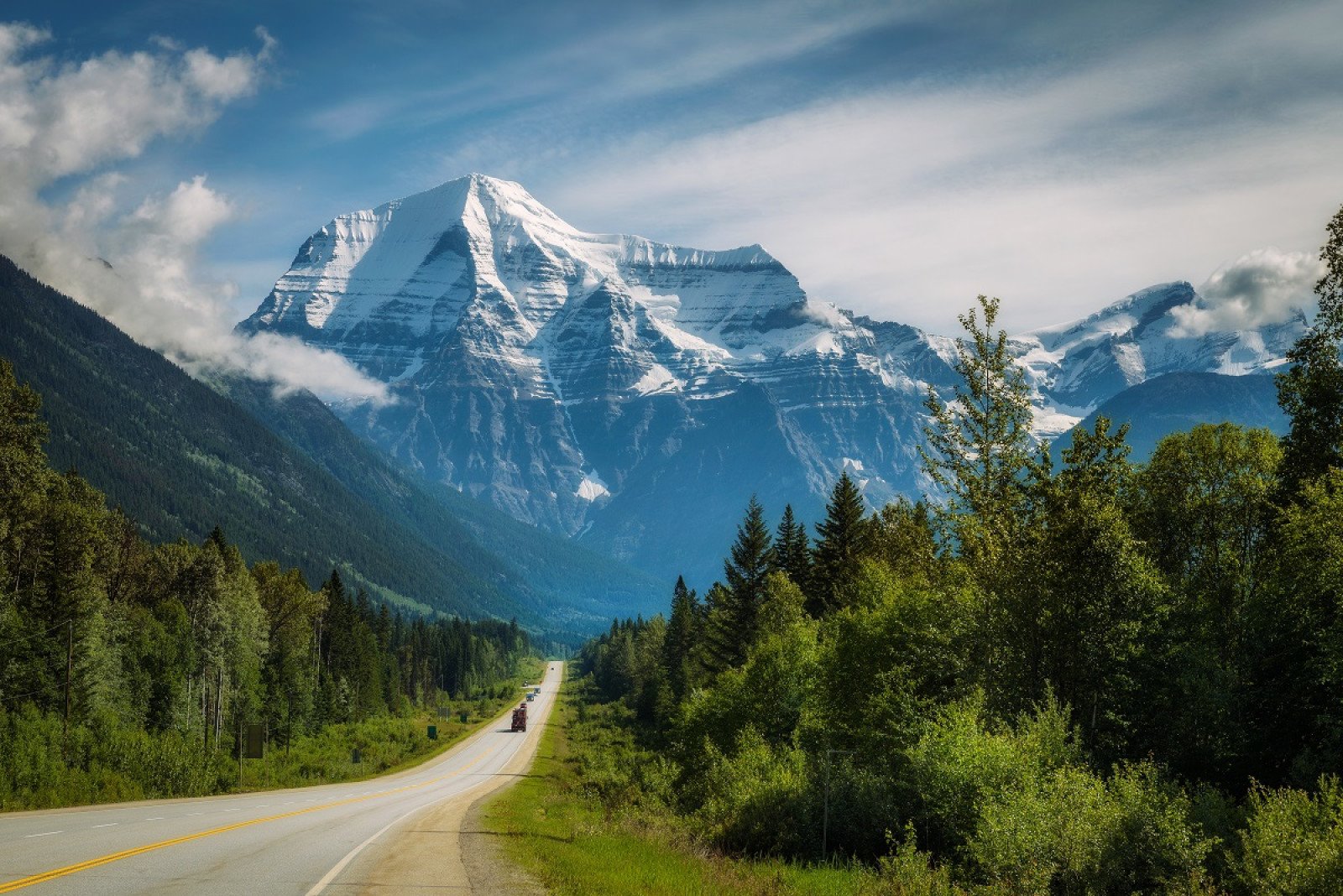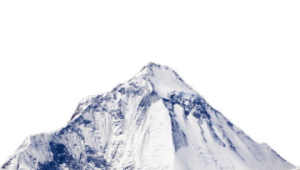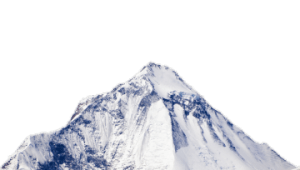Beautiful B.C.
Discover the many landforms found in B.C. and wonder at the beauty of where we live.

Overview
Through a video and colouring activity, students learn about landforms. They will explore the different landforms we can find around B.C. and appreciate the beauty of our province.
Instructions
What you'll need
- Projector and screen to show video
- "Spectacular scenery in British Columbia, Canada" video
- Scrap paper and pencil crayons or markers for each student
- Begin by introducing the word “landform” which describes features on the Earth like mountains and rivers. Explain that natural landforms are shaped by water, wind, and ice. This process can happen in an instant or over hundreds and millions of years.
- Ask students to share landforms they have seen like mountains, valleys, lakes, rivers, and beaches.
- Next, draw five circles on the board, and in each circle write the following five examples of landforms: mountains, ocean, waterfall, river, beach. Ask students to copy the circles and words onto their scrap paper.
- Explain they will be watching a video and should tick the circle when they see that landform in the video. They can tick the circle more than once if they see the landform multiple times. Ask students to also pay attention to the different colours of the landforms in the video like white or green mountains and blue ocean.
- Show the "Spectacular scenery in British Columbia, Canada" video.
- Discuss with students how many times they saw each of the landforms in the circles and where they think it was filmed. Reveal that it was filmed in B.C. and this is where we live.
- Have students colour in the circles with the main colour they saw in the video like white or green for a mountain or blue for an ocean. Students can compare their colours and consider the many different colours of the landforms they saw like brown, green and white mountains, and green and brown forests.
- Discuss with students how lucky we are to live in such a beautiful place, with so many different natural landforms. Have students consider how important it is to conserve and protect the forests and rivers, and keep our air and water clean.
Modify or extend this activity
- Pull up the “Water, wind and landforms” activity to explore how wind, water and ice shape landforms.
Curriculum Fit
Science 3
Big idea
- Wind, water, and ice change the shape of the land
- Sample questions to support inquiry with students: How is the shape of the land changed by environmental factors? What are landforms? What landforms do you have in your local area?
Content
- Major local landforms
- Observable changes in the local environment caused by erosion and deposition by wind, water and ice
Curricular competencies
Questioning and predicting
- Demonstrate curiosity about the natural world
- Make predictions based on prior knowledge
Processing and analyzing data and information
- Experience and interpret the local environment
Social Studies 3
Content
- Relationship between humans and their environment
Curricular competencies
- Recognize the causes and consequences of events, decisions, or developments (cause and consequence)
Assessments
- Assess students’ ability to communicate their ideas in the group discussions and collaborate as they build on each other’s ideas.
- Assess students’ understanding of landforms and which ones we find in B.C.
- Assess students’ ability to connect the beauty of B.C. with the need to protect the environment.
Teaching Notes
Landforms in B.C.
B.C. is a beautiful province, made of many landforms including rocky coastlines, sandy beaches, forests, lakes, mountains, inland deserts, and grassy plains. For more information on B.C. go to WelcomeBC.
Changing landforms
Landforms are always changing. Sometimes this happens slowly over millions of years, and sometimes it happens rapidly. Landforms are shaped and continuously changed by water, wind, and ice. The process is through:
- Erosion: Earth materials being worn away or moved by natural processes like water, wind, and ice.
- Weathering: Static breaking down or dissolving of minerals.
- Deposition: Rocks and soil are moved and arrive in new places
For more information on erosion and weathering check out National Geographic: erosion and weathering.
Glaciers
Glaciers move downhill and outward under the weight of gravity. The movement is comparable to the movement of a river, but much slower. Glaciers can form on tops of mountains or in valleys. Constant thawing and refreezing causes fractures in bedrock and can deposit rocks far from their original location.
Watch this video to learn how glaciers move slowly.
Water wheels and clean, renewable electricity
Water wheels have been traced back in history to ancient Romans, to power machinery for grinding flour. The earliest turbines were invented and used in the early 19th century, and the world’s first hydroelectric power project was in England in 1878. They began to be used in North America in the 1880s. Currently more than 90% of B.C.’s electricity is generated with water. Dams are built across a river, creating large reservoirs or potential energy. As the water flows down through the dam and down pipes known as penstocks, its kinetic energy is used to turn a turbine. The generator converts the turbine's mechanical energy into electricity. This electric energy then goes through various transmission processes before it reaches our homes and business. This electricity is both clean and renewable.
For more information check out:
Conservation
Water and electricity are closely connected here in B.C. We know that with climate change, water levels can vary, including having too much water at times, such as during the floods in Fall 2021, and having longer droughts, such as in Fall 2022. Thus, water conservation is getting more and more important. Some dams, such as the Coquitlam watershed dam, are used both for potable water and to divert water to Buntzen lake for generating electricity, so conserving water also means that we have enough water to make electricity.
Water and energy conservation tips:
- Take short showers, ideally 5 minutes or less. Many showers use 10L per minute.
- Let the lawn go brown. Water use goes up in the summer, but that’s when we have less precipitation.
- Water gardens in the early morning or evening, to reduce evaporation.
- Turn off the tap when you’re done, and when brushing your teeth and washing your hands.
- Get a low-flow showerhead, low-flow toilet, aerators for your taps, to reduce water use.
- Wash laundry in cold water, and only wash clothes when they are dirty.
- Unplug electronics which can draw phantom power from the grid even when turned off.







